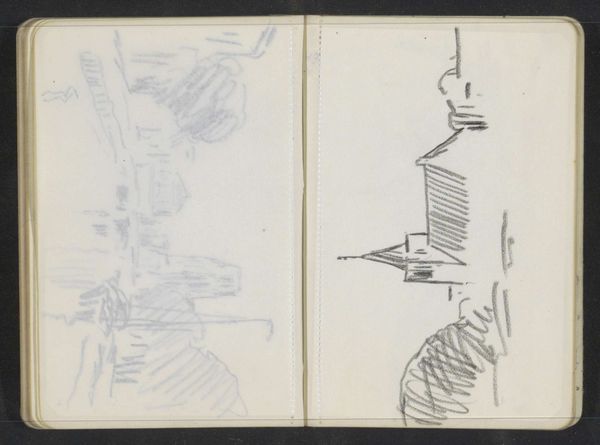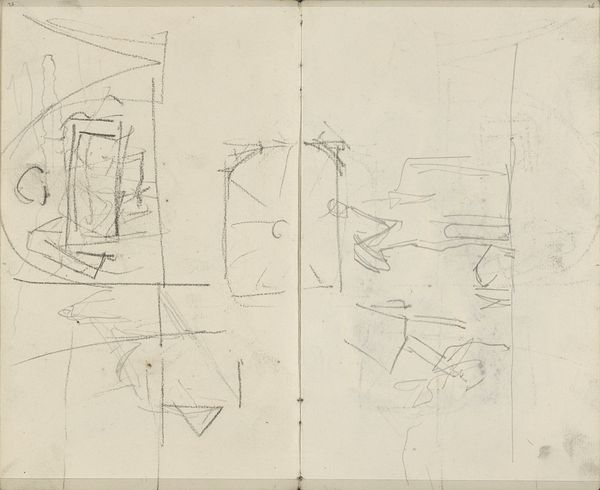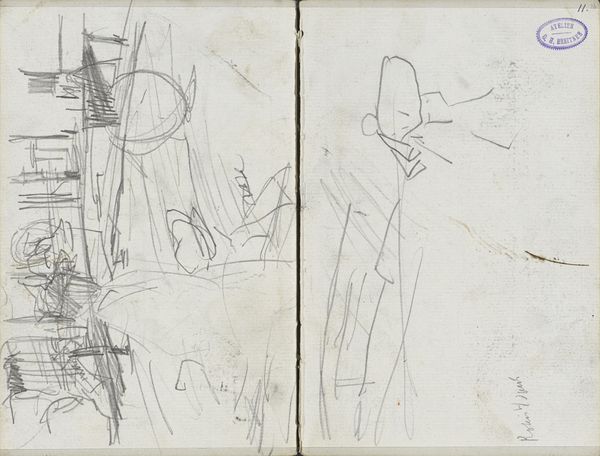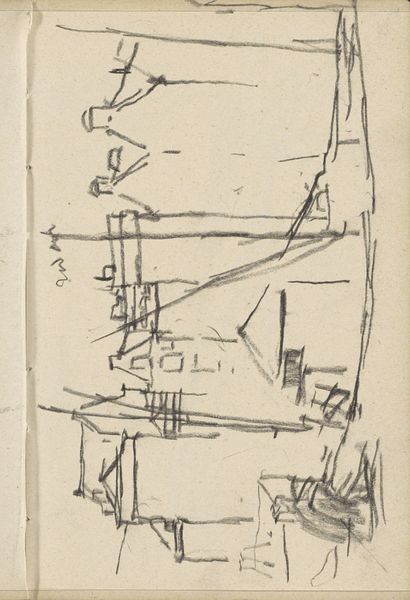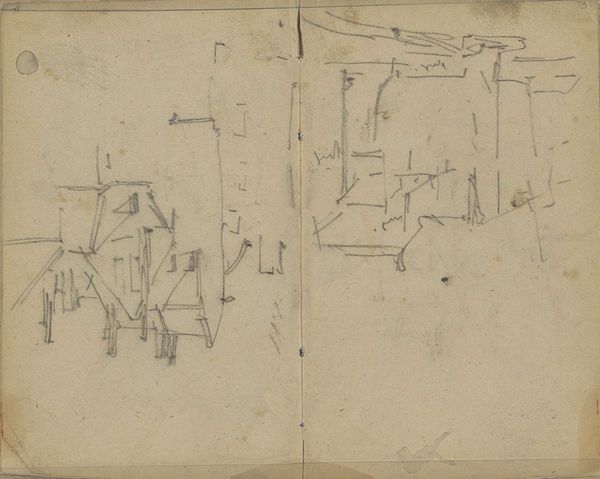
drawing, pencil
#
drawing
#
impressionism
#
landscape
#
pencil
Copyright: Rijks Museum: Open Domain
Editor: Here we have George Hendrik Breitner's "Gezicht op Scheveningen," a pencil drawing from around 1880 to 1882. It looks like a quick sketch in a notebook, almost like a collection of geometric shapes that only vaguely hint at buildings. What catches your eye? Curator: The immediacy and sparseness of line in Breitner's sketch offer a potent insight. Notice how he reduces the forms to near abstraction. The architectural structures—the rooftops in particular—are delineated with simple strokes. What do these lines communicate? Editor: A kind of raw energy, I suppose. It’s as though he’s trying to capture the essence of the place without getting bogged down in details. I feel a nervous quality through the medium itself; it also feels unfinished somehow? Curator: Precisely! Consider the spatial relationships; are we offered a coherent perspectival space? Or is something else being explored here? Editor: I see! The rooftops overlap and intersect strangely; there is no true perspectival depth; is this less about the image's accurate visual information and more about the emotional interpretation of the landscape and architecture itself? Curator: Exactly. And let’s not overlook the medium, pencil, used so minimally, achieving a potent rendering of place through an exploration of structure. The starkness emphasizes the reduction to pure form, a crucial exercise to the composition of elements in space, what lessons might it teach about Breitner's process of seeing? Editor: It's remarkable to consider how much he conveys with so little. Thinking about the underlying structure is crucial. Curator: Indeed. It urges us to value not just what is depicted, but how it is depicted, and why.
Comments
No comments
Be the first to comment and join the conversation on the ultimate creative platform.



